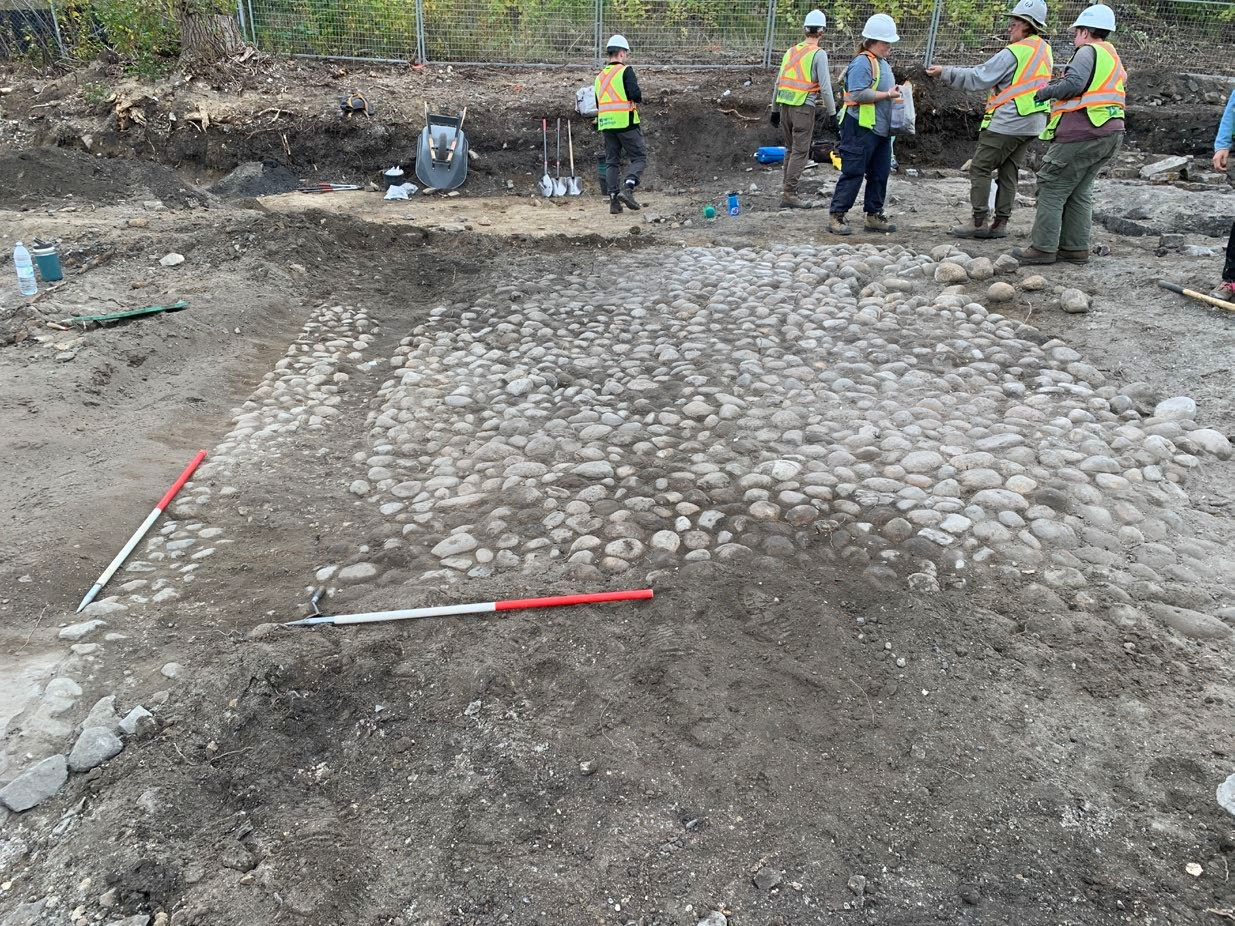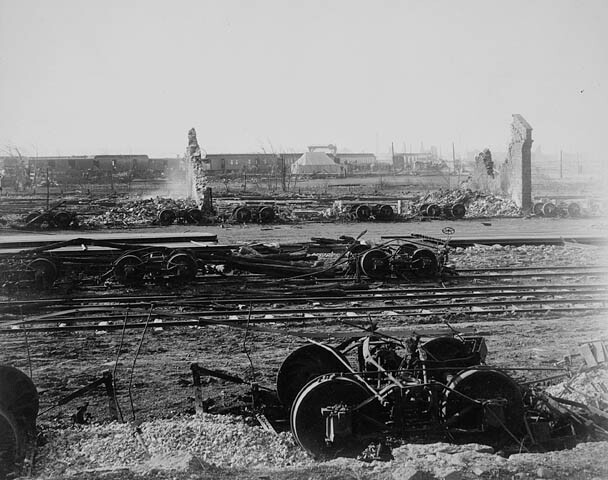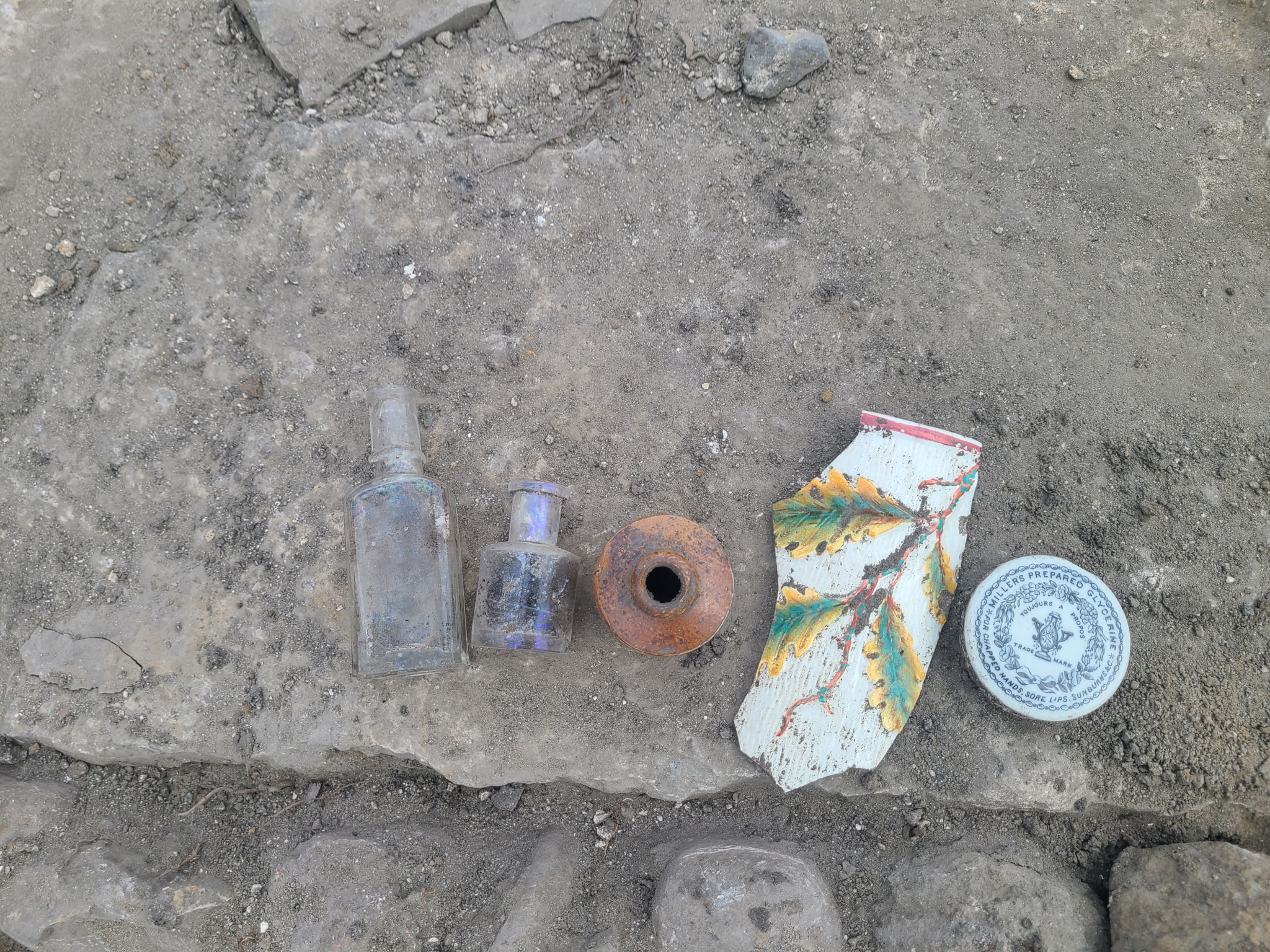
Monica Maika
Archaeologist

Blog updated January 2024
The LeBreton Flats area has a long and rich history. Despite the site’s Great Ottawa-Hull Fire of 1900, physical evidence of pre-fire days still exists.
In this blog post, we explore the rich cultural heritage of LeBreton Flats and take a closer look at recent archaeological finds.
Why dig LeBreton Flats?
At the NCC, we identify, examine and record resources whenever a known or potential archaeological site on federal land in the region is impacted by development.
The LeBreton Flats site meets the criteria: it has a rich history and will soon become a bustling mixed-use destination.
Indigenous presence in the region and in the Flats area has a long history. The site was certainly used by Indigenous communities over time; however, we have not yet recovered evidence of this in our archaeological work. The Flats have provided evidence of European settlement that was central to Ottawa’s economic and industrial development.
Archaeological digs are not just about unearthing artifacts. They are also about piecing together the story of the people who once occupied and used the same land we do today. What we find can provide a clearer understanding of the past and the changes that have happened over time.
In the archaeological digs carried out in 2022 and 2023 at LeBreton Flats, we focused on two areas of interest:
- the former location of the St. Lawrence and Ottawa Railway freight warehouse; and
- the Malloch residence.
The St. Lawrence and Ottawa Railway freight warehouse

The St. Lawrence and Ottawa Railway was a vital part of Canada’s railway industry during the late 19th and early 20th centuries. The railway ran from Ottawa to Prescott, passing through LeBreton Flats. The freight warehouse, built in the late 1800s, served as a hub for storing and transferring goods until the early 1900s.
In the 1960s, pursuing a vision set out in the 1950 Gréber Plan, the NCC cleared much of LeBreton Flats. The community expropriation had lasting effects on people and businesses. Honouring this as part of LeBreton’s past is essential.
As part of the clearing, much of the rail lines and infrastructure in the Flats was removed or covered over with fill. Despite that, we decided to dig for resources that may have been left behind.

Unfortunately, all that remained of the building were some wooden posts and pieces of railway ties. It’s possible that the warehouse was dismantled and moved to another location when it was no longer needed in the early 1880s. It also may have burned down in the Great Fire of 1900—a devastating event that destroyed much of Ottawa and Hull (now Gatineau). The fire blazed out of control and burned down most of Hull’s downtown, the LeBreton Flats industrial area, and even reached Dows Lake.
The Malloch residence

Edward Malloch was a lawyer and politician who lived in LeBreton Flats in the 1850s. His house, built before 1861, served as a brewery in the late 1800s. We found alcohol bottles of all sorts in the digs. The wide variety of bottles recovered indicate that the brewery worked with different suppliers and used recycled bottles.

Evidence also shows that the location was later used for piling lumber as part of J.R. Booth’s Canada Atlantic Railway yard. Sadly, the Great Fire destroyed most of the building, leaving only traces of its existence behind.
These traces include limestone foundation walls of the original Malloch residence. The foundation walls and the depth of the demolition material occurring inside the structure tells us that the residence either had a basement or a large cold storage area.
We also found remains of the original Malloch estate’s stone stable, built before 1861. It included an internal support post. This suggests that the north end of the building may have been 1.5 storeys in height.
Excavation of the Malloch residence site has provided us with more details about the building’s history and use and about the LeBreton Flats’ past.
Continuing excavation in the fall of 2023 allowed us to discover intact residence and stable walls and a paved courtyard between the two buildings. One of the inside walls of the residence was covered in brick and several window openings had been bricked up. We were even able to determine the orientation of some of the original parquet floorboards. We also found broken pieces from hundreds of glass bottles in the upper stables and in the northeast corner of the Malloch residence. The difference in elevation between the upper and lower dig areas of the stables confirms that there were two floors and that an addition had been built on the ground floor.
Before the foundations are once again covered up, our geomatics team performed a 3D scan to preserve our knowledge of the site and create museum-quality material for future presentations and exhibits.
A legacy that lives on
This project gave us new insight into the LeBreton Flats residential and industrial heritage and the lives of the people who lived and worked in the area during the second half of the 19th century.
As the area gets developed, it is important to remember and honour its history. We may incorporate and display artifacts into the redevelopment of LeBreton Flats, which would be in line with the Master Concept Plan’s Culture and Heritage Strategy.
By connecting the past to the present through archaeology, we can ensure that the legacy of LeBreton Flats lives on.